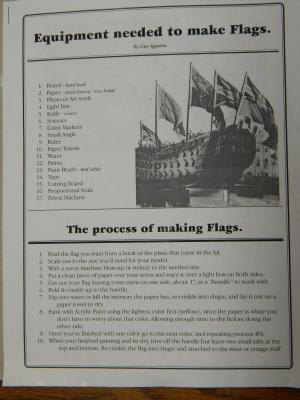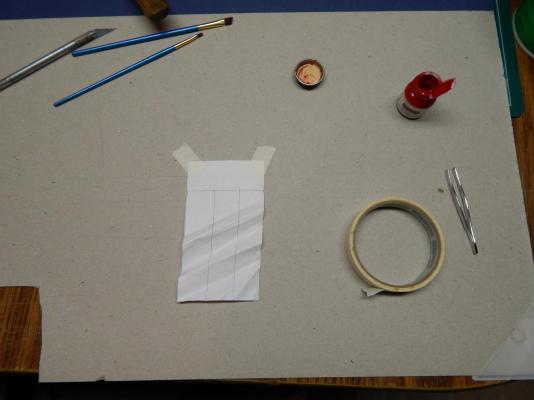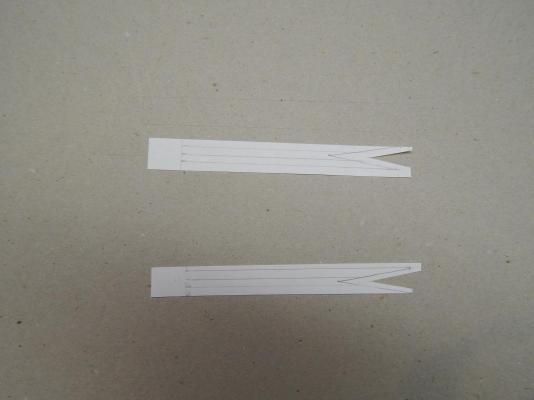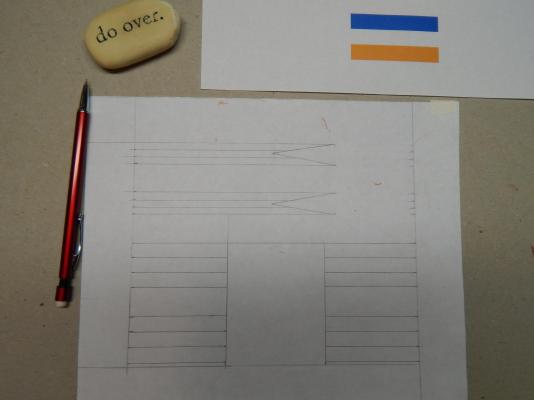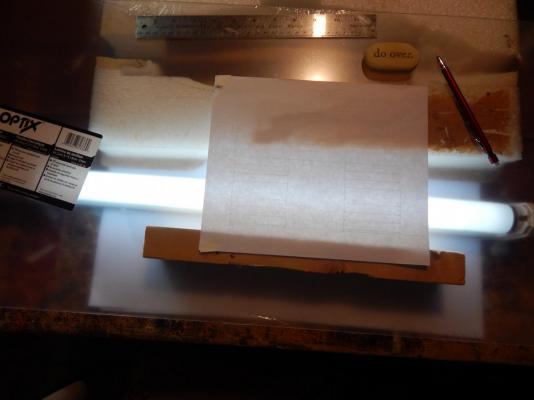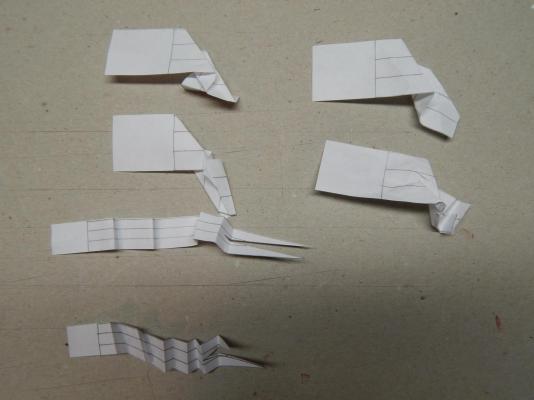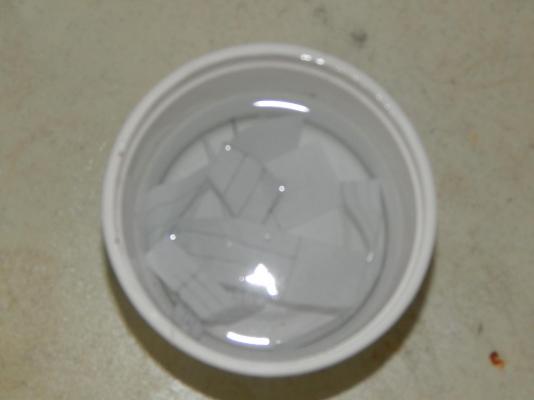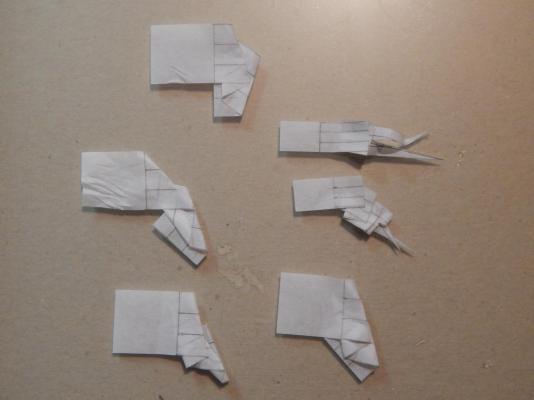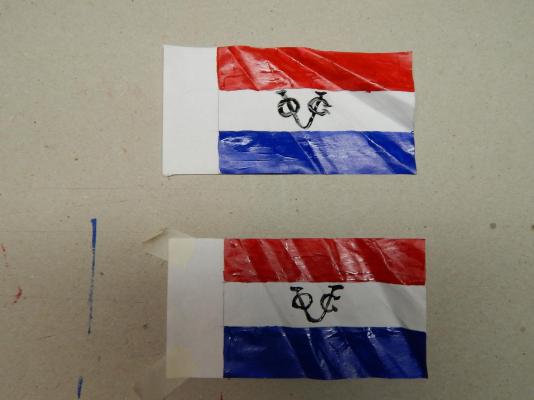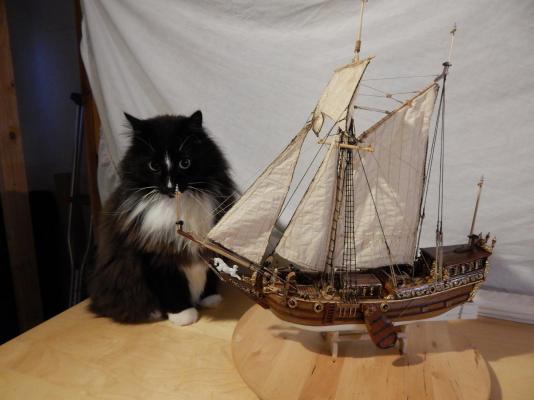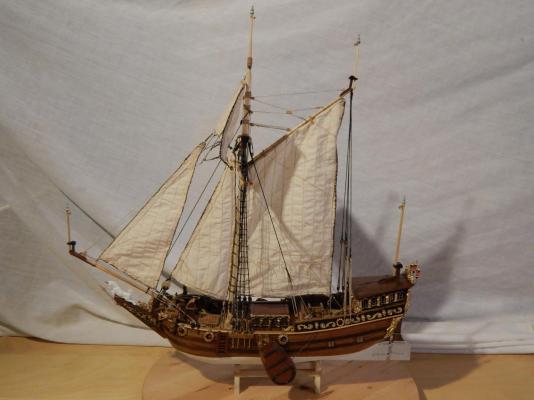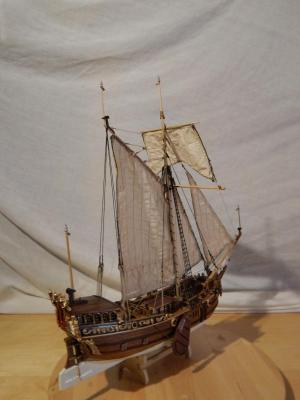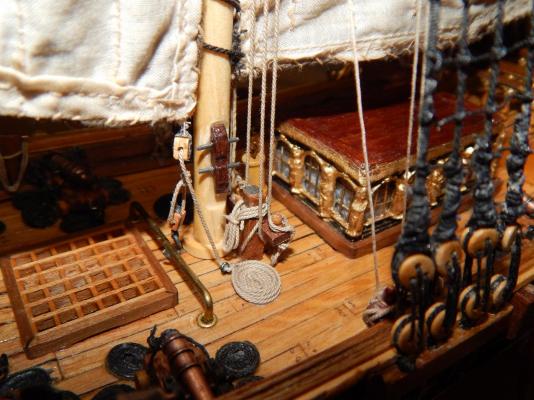-
Posts
1,735 -
Joined
-
Last visited
Content Type
Profiles
Forums
Gallery
Events
Everything posted by flying_dutchman2
-

Naval History On This Day, Any Nation
flying_dutchman2 replied to Kevin's topic in Nautical/Naval History
Part 2 from Admiraal Michiel De Ruyter First Anglo-Dutch War During the First Anglo-Dutch War (1652–1654), De Ruyter was asked to join the expanding fleet as a subcommander of a Zealandic squadron of "director's ships": privately financed warships. After initially refusing,[3] De Ruyter proved his worth under supreme commander Lieutenant-Admiral (the nominal rank of Admiral-General was reserved for the stadtholder but at the time none was appointed) Maarten Tromp, winning the Battle of Plymouth against Vice-Admiral George Ayscue. He also fought at the Battle of Kentish Knock and the Battle of the Gabbard. De Ruyter functioned as a squadron commander, being referred to as a Commodore, which at the time was not an official rank in the Dutch navy. Tromp's death during the Battle of Scheveningen ended the war and De Ruyter declined an emphatic offer from Johan de Witt for supreme command because he considered himself 'unfit'[4] and also feared that bypassing the seniority principle would bring him into conflict with Witte de With and Johan Evertsen. Later De Ruyter and De Witt became personal friends. Colonel Jacob van Wassenaer Obdam then became the new Dutch supreme commander of the confederate fleet. De Ruyter – after refusing to become Obdam's naval 'advisor'[5] – remained in service of the Dutch navy, however, and later accepted an offer from the admiralty of Amsterdam to become their Vice-Admiral on 2 March 1654. He relocated with his family to the city in 1655. 1655–1663 In July 1655 De Ruyter took command of a squadron of eight (of which the Tijdverdrijf (pastime) was his flagship) and set out for the Mediterranean with 55 merchantmen in convoy. His orders were to protect Dutch trade. Meeting an English fleet under Robert Blake along the way, he managed to avoid creating a new flag incident. Operating off the Barbary Coast he captured several infamous corsairs. After negotiating a peace agreement with Salé, De Ruyter returned home May 1656. The same month the States-General, becoming ever more wary of Swedish king Charles X and his expansion plans, decided to intervene in the Northern Wars by sending a fleet to the Baltic Sea. The Swedes controlled this area after Charles had invaded Poland and made himself king there. De Ruyter once again embarked on the Tijdverdrijf arriving in the Sound 8 June; there he waited for Lieutenant-Admiral Jacob van Wassenaer Obdam to arrive. After Obdam had assumed command De Ruyter and the Dutch fleet sailed to relieve the besieged city of Danzig/Gdańsk on 27 July, without any bloodshed. Peace was signed a month later. Before leaving the Baltic, De Ruyter and other flag officers were granted audience by Frederick III of Denmark. De Ruyter took a liking to the Danish king, who later became a personal friend. In 1658 the States-General under the advice of a leading member, (one of the) mayors of Amsterdam Cornelis de Graeff decided to once again send a fleet to the Baltic Sea to protect the important Baltic trade and to aid the Danes against Swedish aggression, which continued despite a peace settlement. In accordance with the States' balance of power politics, a fleet under Lieutenant-Admiral Jacob van Wassenaer Obdam was sent, without De Ruyter, who at the time was blockading Lisbon. On 8 November a bloody melee took place: the Battle of the Sound, which resulted in a Dutch victory, relieving Copenhagen. Still the Swedes were far from defeated and the States decided to continue their support. De Ruyter took command of a new expeditionary fleet and managed to liberate Nyborg in 1659. For this he was knighted by the Danish king Frederick III of Denmark[6] From 1661 until 1663 De Ruyter had convoy duty in the Mediterranean. Part 3 is next btw. there is a website just on the Anglo-Dutch wars. Very detailed with all the ships involved, names of the ships, cannons, sailors, very interesting but also very dry. Marc -

Naval History On This Day, Any Nation
flying_dutchman2 replied to Kevin's topic in Nautical/Naval History
I am going to quote information about some famous Dutch Admirals from the Dutch republic (16-17th century) http://en.wikipedia.org/wiki/Michiel_de_Ruyter One of the more famous one is Michiel de Ruyter and this will be several parts. Most of the information comes from Wikipedia. Michiel Adriaenszoon de Ruyter 24 March 1607 – 29 April 1676) is the most famous and one of the most skilled admirals in Dutch history. De Ruyter is most famous for his role in the Anglo-Dutch Wars of the 17th century. He fought the English and French and scored several major victories against them, the best known probably being the Raid on the Medway. The pious De Ruyter was very much loved by his sailors and soldiers; from them his most significant nickname derived: Bestevaêr (older Dutch for 'grandfather'.) Early life De Ruyter was born in 1607 in Flushing (Vlissingen) as the son of beer porter Adriaen Michielszoon and Aagje Jansdochter[1] Little is known about De Ruyter's early life, but he probably became a sailor at the age of 11. One of the paintings that has been found is supposed to be De Ruyter when he was young. He is seen holding a flute which raises the question if De Ruyter played the instrument as well. In 1622 he fought as a musketeer in the Dutch army under Maurice of Nassau against the Spaniards during the relief of Bergen-op-Zoom. That same year he rejoined the Dutch merchant fleet and steadily worked his way up. According to English sources he was active in Dublin between 1623 and 1631 as an agent for the Vlissingen-based merchant house of the Lampsins (nl) brothers. Although Dutch sources have no data about his whereabouts in those years, it is known that De Ruyter spoke Irish fluently. He occasionally travelled as supercargo to the Mediterranean or the Barbary Coast. In those years he usually referred to himself as "Machgyel Adriensoon", his name in the Zealandic dialect he spoke, not having yet adopted the name "De Ruyter". "De Ruyter" most probably was a nickname given to him. An explanation might be found in the meaning of the older Dutch verb ruyten or ruiten which means "to raid", something De Ruyter was known to do as a privateer with the Lampsins ship Den Graeuwen Heynst. In 1633 and 1635 De Ruyter sailed as a navigating officer aboard the ship Groene Leeuw (Green Lion) on whaling expeditions to Jan Mayen. At this point he did not yet have a command of his own. In the midst of this, in 1637, De Ruyter became captain of a private ship meant to hunt for raiders operating from Dunkirk who were preying on Dutch merchant shipping. He fulfilled this task until 1640. After sailing for a while as schipper (skipper) of a merchant vessel named de Vlissinge, he was contacted again by the Zeeland Admiralty to become captain of the Haze, a merchant ship turned man-of-war carrying 26 guns in a fleet under admiral Gijsels fighting the Spanish, teaming up with the Portuguese during their rebellion. A Dutch fleet, with De Ruyter as third in command, beat back a Spanish-Dunkirker fleet in an action off Cape St Vincent on 4 November 1641. After returning he bought his own ship, the Salamander, and between 1642 and 1652, he mainly traded and travelled to Morocco and the West Indies to amass wealth as a merchant. During this time his esteem grew among other Dutch captains as he regularly freed Christian slaves by redeeming them at his own expense. Part 2 will follow. -

Naval History On This Day, Any Nation
flying_dutchman2 replied to Kevin's topic in Nautical/Naval History
Learned something new today and I checked the website. Somebody has been busy writing this all up. Thanks for the great read. Marc -
Thank you for your kind works. That wooden shoe boat is the coolest item I have ever seen when wooden shoes are made into something. I have 2 pairs myself and wear one when I shovel the snow. The other pair is orange and that would make a great model. Thank you for sharing. Marc
- 85 replies
-
- yacht mary
- mamoli
-
(and 1 more)
Tagged with:
-

Naval History On This Day, Any Nation
flying_dutchman2 replied to Kevin's topic in Nautical/Naval History
I second Eamonn's suggstion. I knowit is a bi more work but we can learn from it. I will add to it as well with some Dutch Admirals and I have been eading an old book on Merchant Kings that I can quote some of. (Depends on my time with work) Marc -
My mother is one of those 85 year olds that excels in her class. Skypes with the family, books vacation on the internet, reads the NRC and the NY times, researches philosophy, etc. Marc
- 85 replies
-
- yacht mary
- mamoli
-
(and 1 more)
Tagged with:
-
Thanks for the link. Looks like the Dutch eBay. I saved the link so I can check it out. Possibility for me that if I find something I gotta have I will have it sent to my mom in Amsterdam, pay the person and my mother will send it to me. Also the Nederlandse Ver. voor Model. has some nice plans. You can get the same plans in the US at Taubman but they are twice as expensive. Marc
- 85 replies
-
- yacht mary
- mamoli
-
(and 1 more)
Tagged with:
-
:D :D :D :D :D That is good one LOL. It is the logical answer. Marc
-
As of today I started cutting out the frame pieces and there is a lot of them. I have the scroll saw outside due to the nice weather. Once cut, I will start putting the hull together according to McArdle's book. Yes, it scares me a bit. If I compare it to a kit, than a kit is so much easier. You follow the plan and you have yourself a ship. But with the help of my local club and the immense knowledge on this site, I feel confident I can do this. Most of all, I will have fun. Pictures will follow. Marc
- 305 replies
-
- utrecht
- statenjacht
-
(and 1 more)
Tagged with:
-
Hans; Thank you for your kind words. Who made the kit 40 years ago? Marc
- 85 replies
-
- yacht mary
- mamoli
-
(and 1 more)
Tagged with:
-
That ship looks beautiful. I find it amazing that it is from card. Marc
- 883 replies
-
- royal caroline
- ship of the line
-
(and 1 more)
Tagged with:
-
This is the approach I always take. My knowledge of plants, soils, insects and plant diseases is very advanced. I also love what I do, so that helps. I am very good at it. When I do explain to people a question they ask, I give details and I will tell them the way it is. Sounds arrogant? I can be. If you know your sh*t, there is nothing wrong with correcting others. Sounds harsh, but as a Dutchman, we are "direct", no flowery language. Marc
-

Batavia by *Hans* - FINISHED
flying_dutchman2 replied to *Hans*'s topic in - Build logs for subjects built 1501 - 1750
The first replica burned up and now they stopped building the 2nd replica. Bummer, but that is a lot of money for a couple of logs. Build the ships of Abel Tasman, small project. Or the ship from Hendrick Hamel used to explore SE Asia which is the 'De Sperwer' (the Sparrowhawk) (or is that one built already). -
LOL....oops, the tour guide didn't know what he was telling you. I love all the pictures you put up from the Batavia. You are giving me a detailed tour of what is located on the other side of the planet. Thank you. Marc
-
I like your "long winded" explanations because you give me the details and the why's (I learn a lot from that). If I do more POB's in the future, I will start using this method, as there is a lot of logic in this. It is an extra step but worth it. Next question and to quote you "greater resistance to environmental changes", you use Limewood, why? I know it is cheap. Is there any other wood you use? The Jacht Mary is a tiny bit warped. You see that when you look from the bow to stern at eye level. My Bounty did that as well. The Utrecht is a POF. In theory this boat should not warp. In Ships in Scale (March/Apr. 2014 & several issues before that), Shipwright Apprentice, Robert E. Hunt has been showing and describing detailed steps of "ship model planking". I have practically memorized these articles. Marc
-

Naval History On This Day, Any Nation
flying_dutchman2 replied to Kevin's topic in Nautical/Naval History
April 6th 1909 - Commander Robert E. Peary reports reaching the North Pole 1917 - U.S. declares war on Germany 1945 - First heavy kamikaze attack on ships at Okinawa. 1961 - USS Lake Champlain brings oxygen to aid stricken passenger of British liner Queen of Bermuda. 1968 - USS New Jersey recommissioned for shore bombardment duty in Vietnam 1989 - President orders DOD to assist in Exxon Valdez oil spill cleanup 1993 - Branch Navy Hospital Adak responds to crash of civilian Chinese airline providing lifesaving treatment and medical evacuation of 89 injured passengers. Only one passenger out of 265 passengers died. -
Beautiful boat. It is interesting to note that you like the paintings from van de Velde the elder because you have 2 ships based on his drawings/paintings. It also amazes me that you built more than 2 ships at a time. I can't do that. I can built one and do research on the next one, and that is it. Question; on post #48 you add filler wood between the frames, like making it a solid hull. Do you do this to all the ships you built? Something I need to do because the planking would lay nicely on the hull. Would have been nice if you lived in van de Velde's era. He would paint and you would built the ships he painted. Marc
-
Thank you Nigel. I enjoyed building the model. The Mary is a practice yacht towards my next build, the Staten Jacht - Utrecht. My 1st scratch. The cat (Boomer, 21 lbs, and thinks he is a small dog). Wants to be everywhere I am and in the hobby room he has a basket right next to the wood. When these pictures were taken he has to be there, and will always stare at me, because he knows that if he paws the rigging and I notice it, his ears go back, jumps on the floor and hides. Marc
- 85 replies
-
- yacht mary
- mamoli
-
(and 1 more)
Tagged with:
-
It works and if you have any questions, feel free to ask. Marc
- 85 replies
-
- yacht mary
- mamoli
-
(and 1 more)
Tagged with:
-
Thanks. It is difficult to get straight lines but then if I fold them correctly you may not see that. Kurt mentioned that if I keep practicing they will get better over time. That is why I made several this time. Some people air brush the flags, I can't figure out how they do that. Speaking of airbrushing, Kurt gave a workshop on that. Are you getting the pdf's on that? What ever you need, let me know. Marc
- 85 replies
-
- yacht mary
- mamoli
-
(and 1 more)
Tagged with:
-

3D Printing - Not Just Yet!
flying_dutchman2 replied to dvm27's topic in CAD and 3D Modelling/Drafting Plans with Software
I know it is not naval related but still amazing. Here is something from the University of Southern California which is testing a giant 3D printer that could be used to build a whole house in under 24 hours. http://innovation.uk.msn.com/design/the-3d-printer-that-can-build-a-house-in-24-hours Just think in a couple of years 3D printers will build boats, cars, etc. Marc -
This time I decided to omit the flags that come with the kits because, a. - they are one sided print and b. - they never fall correctly. I am doing it from a handout from Gus Augustin - Equipment needed to make flags. You make them from paper, fold them, wet them to take memory out, paint them with acrylic, fold them and you have a flag. I make more than one so I can chose the best one and as the brochure says, it is cheap as you use paper and you get better at making them over time. The brochure Drawing the flags. Using a light table jig to draw the other side of the flag. Folding the flags Soaking them in water. Folding the flags after the water and drying. Ready to paint. Finished flag.
- 85 replies
-
- yacht mary
- mamoli
-
(and 1 more)
Tagged with:
-
Here is the almost finished Mary. I am still working on the flags and the display case. More details. I always add coiled rope to ships. The cat just wants to be where to rigging is present.
- 85 replies
-
- yacht mary
- mamoli
-
(and 1 more)
Tagged with:
About us
Modelshipworld - Advancing Ship Modeling through Research
SSL Secured
Your security is important for us so this Website is SSL-Secured
NRG Mailing Address
Nautical Research Guild
237 South Lincoln Street
Westmont IL, 60559-1917
Model Ship World ® and the MSW logo are Registered Trademarks, and belong to the Nautical Research Guild (United States Patent and Trademark Office: No. 6,929,264 & No. 6,929,274, registered Dec. 20, 2022)
Helpful Links
About the NRG
If you enjoy building ship models that are historically accurate as well as beautiful, then The Nautical Research Guild (NRG) is just right for you.
The Guild is a non-profit educational organization whose mission is to “Advance Ship Modeling Through Research”. We provide support to our members in their efforts to raise the quality of their model ships.
The Nautical Research Guild has published our world-renowned quarterly magazine, The Nautical Research Journal, since 1955. The pages of the Journal are full of articles by accomplished ship modelers who show you how they create those exquisite details on their models, and by maritime historians who show you the correct details to build. The Journal is available in both print and digital editions. Go to the NRG web site (www.thenrg.org) to download a complimentary digital copy of the Journal. The NRG also publishes plan sets, books and compilations of back issues of the Journal and the former Ships in Scale and Model Ship Builder magazines.



